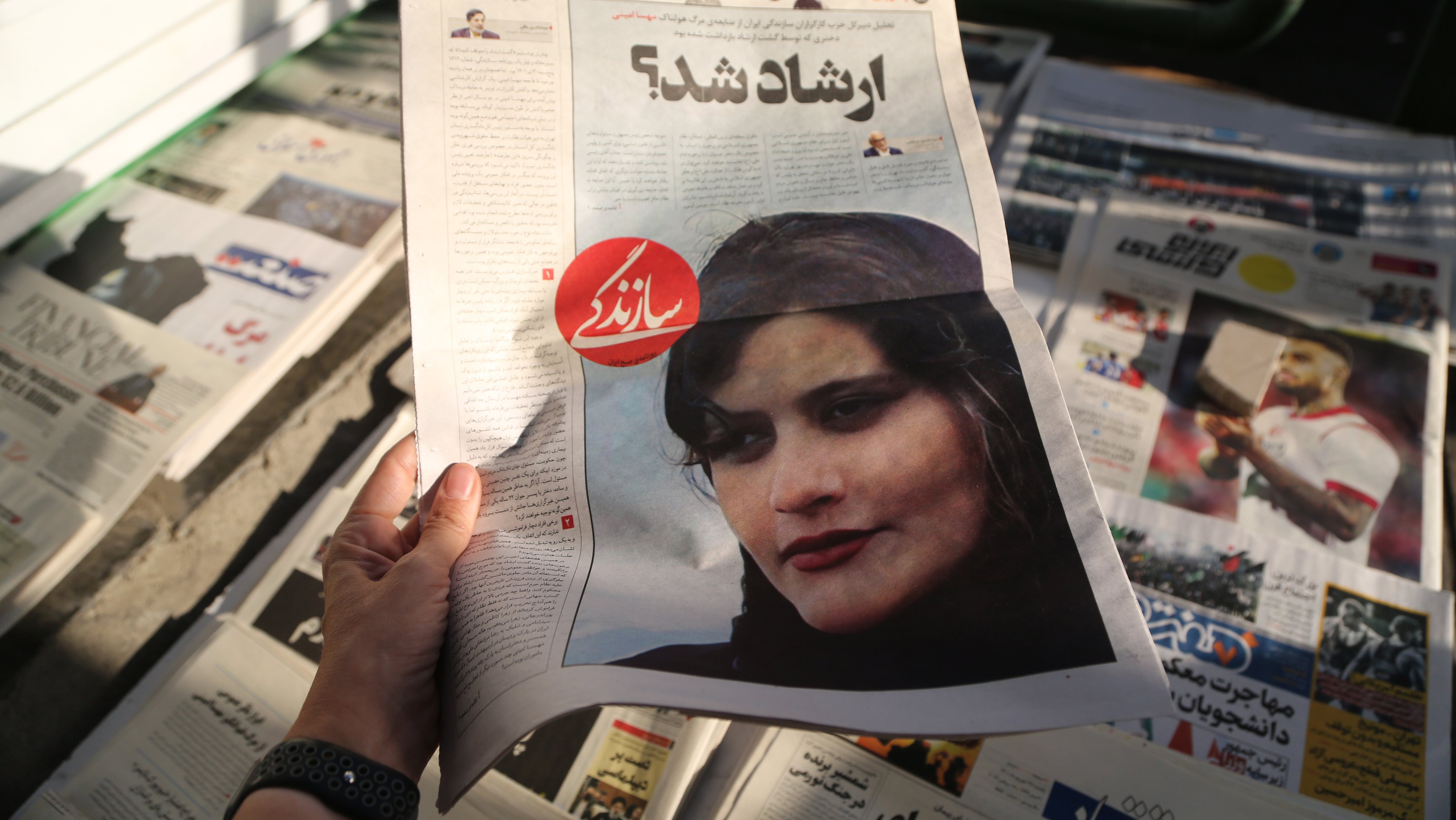A wave of protests, in the streets and on social networks, has been gaining strength in Iran after the funeral of Mahsa Amini, a 22-year-old girl who died after being detained by the Moral Police, a police body that monitors compliance. of dress standards and social behavior in the country.
At the funeral that took place this Saturday in Saqez, the young woman’s hometown, in the province of Kurdistan, some women would have dropped their veils in protest at the imposition of wearing the hijab, a garment that covers the hair and that women they are required to wear. the street and in all public places.
According to the BBC, which cites videos posted on social networks and whose authenticity has been validated by BBC Persia services, the funeral was also marked by calls for “death to the dictator” that led the police to fire on the crowd.
Gunshots can be heard as protesters run for cover tonight in Ferdowsi Street, Sanandaj, in the third night of protests over the death of 22-year-old Mahsa Amini following his arrest by Iran’s morality police for “inappropriate hijab”.pic.twitter.com/J8QSifaRUo
—Shayan Sardarizadeh (@Shayan86) September 18, 2022
The Reuters agency reports that the protests continued on Sunday, highlighting their strength on social media for which the hashtag #MahsaAmini was created, which has already become one of the most popular in Persian-language posts on Twitter. There are also videos on Twitter showing protests in Tehran.
Mahsa Amini was arrested Tuesday in Tehran, the capital of Iran, by the Moral Police, allegedly for not abiding by the dress code, which in particular requires a head covering. According to witnesses at the scene, she was assaulted inside the police van where she was being held and ended up falling into a coma and dying. The Iranian police have already denied these accusations, justifying that the young woman died after a sudden cardiac arrest.
Amini’s father, quoted by the reformist website Emtedad, denies the authorities’ thesis, according to which his daughter died of a congenital medical condition. “I personally deny these claims because my daughter was healthy and had no health problems.”
Mahsa Amini, 22, was arrested by Iran’s morality police for so-called “inappropriate hijab”. She fell into a coma at a police station and sadly died today at a hospital. The morality police claim that she had a “sudden heart attack”. Her mother says that Mahsa was killed by the authorities. pic.twitter.com/ibWOnMBROk
—Shayan Sardarizadeh (@Shayan86) September 16, 2022
The Iranian president, the hard-line conservative, Ebrahim Raisi, has already instructed the interior minister to open an investigation.
The Kasra Hospital, located in the north of the Iranian capital, issued a statement indicating that Mahsa Amini entered the services on September 13 without vital signs. This statement was later removed from the hospital’s social networks after comments on social networks close to the most conservative forces accusing the institution of being an anti-regime agent. A video posted on Twitter by the editor of the news website TheFreedomPost, whose authenticity could not be verified, shows hospital employees laying bouquets of flowers on what will be the body of the young woman who arrived dead at the hospital unit.
Then they said goodbye to Mahsa Amini, the nurses and the medical staff of the Kasra hospital in Tehran, Iran, where they were admitted in an emergency (coma and cardiac arrest) after being detained and brutally beaten by a “moral patrol” who saw the veil “bad place ”. pic.twitter.com/o48qPpqzsi
— Laura De Rosa (@LauraDeRosaMart) September 17, 2022
Iran’s television station showed surveillance camera footage of Mahsa after her arrest, and human rights activists accused the public station of censoring the footage to tell a false story.
An organization that monitors computer and online security, Netblocks, has denounced the interruption of Internet connections in several places in Iran since the news of the death of the young woman was released, even going so far as to interrupt stock trading. Saturday.
Since the 1979 Islamic revolution led by Ayatollah Khomeini, the same religious leader who launched a fatuousa religious edict calling for the death of writer Saman Rushdie, which now requires women in Iran to wear “modest” clothing, which in practice requires full coverage of arms and legs and a scarf or cape to cover hair .
Source: Observadora
